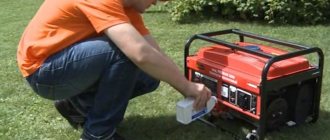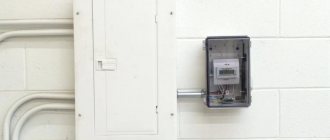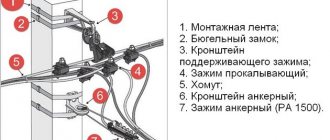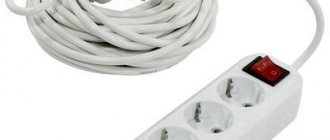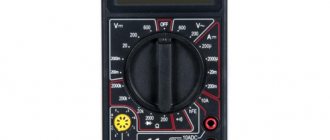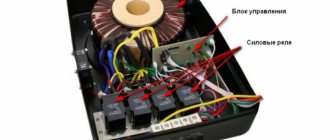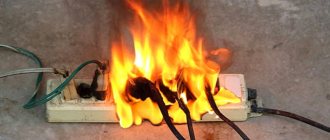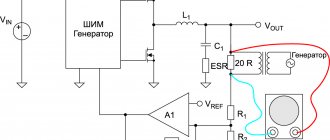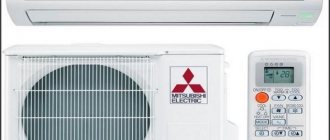The average buyer chooses an extension cord based on wire length and price, without thinking about the safety of its operation. It works - oh well. Electricians look at completely different characteristics, and often make extension cords themselves. How to choose the right extension cord for your needs so as not to burn down the house and why the price of externally identical extension cords can differ several times, you will learn in this educational program.
Wire length and number of sockets
Remember that the longer the carry, the greater the voltage loss will be. For household appliances, the optimal length of the extension cord is from 3m to 7m.
At the same time, you can connect a load with a power of no more than 3.5 kW (up to 16A) at the same time. It depends on the cross-section of the wire.
The contacts of the sockets are simply not designed for more, no matter how thick the wire turns out to be.
By the way, many sockets for sockets are needed not to connect a large number of devices at the same time, but in order not to constantly pull out the plug, thereby protecting against loosening of the contacts.
Principle of operation
The principle of operation of an extension cord for a lawn mower for the end user is not much different from the mechanism of operation of an ordinary network carrier: the device is plugged into an outlet, transferred to the required distance (unwound to the required length), where a device is connected to it, in this case a lawn mower.
According to their design, extension cords for lawn mowers are classified into products “in a coil” and “on a reel”. The second option is the most popular and preferred.
In turn, extension cords on a reel are also classified into 2 groups . Representatives of the first category have the form of a coiled extension cable, one end of which is equipped with a molded socket. The coil and plug are located at the other end, located at the point of connection to a stationary outlet.
This design is very convenient to use - the user does not need to carry the coil itself, just unwind the wire. Thanks to the special features of the case, unwinding and rewinding the cable is done quickly and without unnecessary effort.
Wire cross-section and grade
Select the wire cross-section for connecting the load of room equipment (TV, computers, refrigerators) to at least 0.75 mm2.
Many people do not know, but all extension cords must be manufactured and comply with GOST R 51539-99 (IEC 61242-95). It is called "Extension Cords for Household and Similar Purposes on Cable Reels." You can download it here.
Here are the regulated wire cross-sections for extension cords in accordance with this standard:
- load up to 6A (1.3kW) – 0.75mm2
- load up to 10A (2.2kW) – 1mm2
- load up to 16A (3.5kW) – 1.5mm2
The type of wire is most often PVA with polyvinyl chloride insulation.
In this case, it is advisable to have the diameter of the wire itself (not a separate core) from 5 mm and above. If this is not the case, the manufacturer most likely saved on something - either on copper or on insulation.
The KG brand can also be used instead of PVA. It is more resistant to negative temperatures and changes in weather conditions. For street or garage use, this choice would be more correct.
Drag PVA several times across a concrete floor, and its insulation will come to an end. KG is more resistant to such operating conditions. Other cable brands are also applicable:
Here are the appropriate wire cross-sections for high-quality carriers, and what can be safely turned on in them without the risk of overheating (refrigerators, washing machines, TVs, drills, grinders, heaters, etc.):
Unfortunately, you will almost never find factory-made household extension cords with a cross-section of 2.5 mm2 in stores. Unless it will be reels or reels of great length, from 50 meters and above.
And even then, the increased cross-section is needed here primarily to reduce voltage losses, and not to connect more power.
Therefore, such models (with wires 2.5mm2, 4mm2 and higher) are often made independently.
For more powerful devices, such as inverter welding machines, there is a completely different class of products.
Options
The cable length can be completely different. Which wire should I choose for the extension cord? It all depends on the purpose of the device. And also the locations of sockets.
For a household extension cord, you need a medium-sized wire, which can be up to 10 meters long. The most important thing is that the cord does not stretch during operation.
Professional models mean higher performance. If you are thinking about which cable to choose for an extension cord for construction or welding work, choose a device with a length of at least 50 meters. However, you need to control the position of the cord. It should not be unwound. Otherwise, overheating or knotty weaves may occur.
Mechanical protection
A high-quality model must have protection against pulling and bending of the wire.
This applies equally to both the connector with the plug and the place where the conductors enter the extension cord housing.
Never operate a carrier with twisted wires. Firstly, this will sooner or later lead to damage to the cores, and secondly, such a cable will simply heat up.
Please note that extension cords can only withstand their rated load when the cable is completely unwound. On the case, sometimes special symbols are applied, with the maximum current when the wire is wound and unwound.
Grounding
Grounding is a useful option that will reduce the risk of electric shock when operating a faulty electrical appliance, and will also reduce the level of interference in equipment connected to the same network or located nearby. The grounding conductor is especially important when connecting to the extension cord of a washing machine and refrigerator. True, grounding will be relevant only when the apartment is connected to the ground loop.
Fork
Before buying an extension cord, look at what kind of plug it has:
- cast
- detachable
If the fork is not cast and can be disassembled, then there is a risk of running into a dubious product. It is these forks that are easiest to make using a homemade method.
To produce solid ones, you at least need some professional equipment.
In addition, if your equipment has a plug without a Euro socket, then an extension cord with a Euro socket is contraindicated for you. The use of Euro adapters and adapters in this case increases the contact resistance several times.
It also disrupts the grounding system, which can lead to electric shock. It is simply dangerous to connect some devices and tools without grounding.
The transition resistance of one contact in the new model should be no more than 0.05 Ohm. During operation, it can deteriorate to 0.1 Ohm.
That is, with a rated load of 10A, only on the plug-socket contacts alone you can lose up to 10W of power every hour. Here is a summary of voltage and power losses in extension cords depending on the length, material and cross-section of the cores.
And this is with standardized values. What happens if you stick various adapters in?
Also pay attention to the location of the plug-in contacts of the sockets. They must be made so that the plug of the connected device is inserted diagonally or obliquely, and not vertically.
Otherwise, it will be impossible to connect the second plug to the adjacent socket.
What does it mean?
An electrical extension cord with grounding is a type of special product that allows you to connect devices in places where there is no possibility of laying a fixed network. Such components are equipped with an additional cable conductor, which allows protection of a person from electric shock in the event of a short circuit.
The extension cord is connected to sockets that have an additional contact, making it possible to reduce the influence of electrical interference that occurs when a large number of household appliances are in close proximity.
Their use is not mandatory.
But during long-term operation of a refrigerator, washing machine, or microwave oven connected through an extension cord, it is necessary to provide for the risks of a short circuit.
In this case, the grounding option will be a good solution for protecting electrical appliances and consumers from possible faults. In addition, such an extension cord must be used where lamps with LEDs that have the property of accumulating charge during operation are turned on.
Protection
Strive to choose models with built-in surge protection and protection from dust and moisture. Moisture resistance is indicated by the Latin letters IP. Household extension cords most often come with IP20 numbers.
They can only be used in dry and dust-free rooms, but not in the bathroom or garage. Models with IP44 protection already have dust and splash protection.
Do not confuse models of surge protectors and simple carriers with a shutdown button. The latter have a built-in switch designed to manually turn off the power.
It in no way protects the equipment from voltage surges and imbalances. To do this, there must be at least a varistor inside the case. What this is will be discussed below.
By the way, the switches themselves are different:
- bipolar
- four-pole
It is better to choose 4-pole networks. It's quite easy to distinguish them.
Four-pole is twice as wide. It is he who breaks both phase and zero.
With a two-pole connection, you can only disconnect the neutral conductor, and the phase will still be supplied to sockets and devices when the plug is plugged in.
Be careful!
Range.
| Name | Number of sockets | Length | Amount in a package | vendor code | |
| Extension cord U02 without switch | 2 | 2 | 60 | WYP10-06-02-02-Z | |
| Extension cord U02 without switch | 2 | 3 | 60 | WYP10-06-02-03-Z | |
| Extension cord U02 without switch | 2 | 5 | 40 | WYP10-06-02-05-Z | |
| Extension cord U03 without switch | 3 | 2 | 60 | WYP10-06-03-02-Z | |
| Extension cord U03 without switch | 3 | 3 | 60 | WYP10-16-03-03-Z | |
| Extension cord U03 without switch | 3 | 5 | 40 | WYP10-16-03-05-Z | |
| Extension cord U04 without switch | 4 | 2 | 60 | WYP10-06-04-02-Z | |
| Extension cord U04 without switch | 4 | 3 | 40 | WYP10-16-04-03-Z | |
| Extension cord U04 without switch | 4 | 5 | 30 | WYP10-16-04-05-Z | |
| Extension cord U05 without switch | 5 | 3 | 40 | WYP10-16-05-03-Z | |
| Extension cord U05 without switch | 5 | 5 | 30 | WYP10-16-05-05-Z | |
| Extension cord U06 without switch | 6 | 3 | 40 | WYP10-16-06-03-Z | |
| Extension cord U06 without switch | 6 | 5 | 30 | WYP10-16-06-05-Z | |
| Extension cord U2 without switch | 2 | 2 | 60 | WYP10-06-02-02 | |
| Extension cord U2 without switch | 2 | 3 | 60 | WYP10-06-02-03 | |
| Extension cord U2 without switch | 2 | 5 | 40 | WYP10-06-02-05 | |
| Extension cord U3 without switch | 3 | 2 | 60 | WYP10-06-03-02 | |
| Extension cord U3 without switch | 3 | 3 | 60 | WYP10-16-03-03 | |
| Extension cord U3 without switch | 3 | 5 | 40 | WYP10-16-03-05 | |
| Extension cord U4 without switch | 4 | 2 | 60 | WYP10-06-04-02 | |
| Extension cord U4 without switch | 4 | 3 | 40 | WYP10-16-04-03 | |
| Extension cord U4 without switch | 4 | 5 | 30 | WYP10-16-04-05 | |
| Extension cord U5 without switch | 5 | 3 | 40 | WYP10-16-05-03 | |
| Extension cord U5 without switch | 5 | 5 | 30 | WYP10-16-05-05 | |
| Extension cord U6 without switch | 6 | 3 | 40 | WYP10-16-06-03 | |
| Extension cord U6 without switch | 6 | 5 | 30 | WYP10-16-06-05 | |
| Extension cord U02K with switch | 2 | 2 | 60 | WYP10-06-02-02-ZК | |
| Extension cord U02K with switch | 2 | 3 | 60 | WYP10-06-02-03-ZК | |
| Extension cord U02K with switch | 2 | 5 | 40 | WYP10-06-02-05-ZК | |
| Extension cord U03K with switch | 3 | 2 | 60 | WYP10-06-03-02-ZК | |
| Extension cord U03K with switch | 3 | 3 | 60 | WYP10-16-03-03-ZК | |
| Extension cord U03K with switch | 3 | 5 | 40 | WYP10-16-03-05-ZК | |
| Extension cord U04K with switch | 4 | 2 | 60 | WYP10-06-04-02-ZК | |
| Extension cord U04K with switch | 4 | 3 | 40 | WYP10-16-04-03-ZК | |
| Extension cord U04K with switch | 4 | 5 | 30 | WYP10-16-04-05-ZК | |
| Extension cord U05K with switch | 5 | 3 | 40 | WYP10-16-05-03-ZК | |
| Extension cord U05K with switch | 5 | 5 | 30 | WYP10-16-05-05-ZК | |
| Extension cord U06K with switch | 6 | 3 | 40 | WYP10-16-06-03-ZК | |
| Extension cord U06K with switch | 6 | 5 | 30 | WYP10-16-06-05-ZК | |
| Extension cord U3K with switch | 3 | 3 | 60 | WYP10-16-03-03-K | |
| Extension cord U3K with switch | 3 | 5 | 40 | WYP10-16-03-05-K | |
| Extension cord U4K with switch | 4 | 3 | 40 | WYP10-16-04-03-K | |
| Extension cord U4K with switch | 4 | 5 | 30 | WYP10-16-04-05-K | |
| Extension cord U5K with switch | 5 | 3 | 40 | WYP10-16-05-03-K | |
| Extension cord U5K with switch | 5 | 5 | 30 | WYP10-16-05-05-K | |
| Extension cord U6K with switch | 6 | 3 | 40 | WYP10-16-06-03-K | |
| Extension cord U6K with switch | 6 | 5 | 30 | WYP10-16-06-05-K | |
| Extension cord U-S03K with switch | 3 | 3 | 40 | WYP30-16-03-03-ZК | |
| Extension cord U-S03K with switch | 3 | 5 | 40 | WYP30-16-03-05-ZК |
Internals of extension cords
One of the most common types is the so-called computer extension cord or surge protector. It has a built-in switch in the case that can be used to turn off the power to all outlets.
It is usually designed for a current of 10A (power 2.2 kW). Each socket in them has a grounding contact. Which is extremely necessary for apartments with three-wire wiring (phase-zero-ground).
The supply wire on high-quality models must be marked. The brand and core cross-section are stamped on it.
Do not buy carriers where the cross-section of the wires is less than 0.75 mm2 or where there are no identification marks on the wires at all.
However, you should not particularly trust the thickness of the cable itself. It is quite possible that the insulation in it will be quite thick, but the veins will be very thin.
Such a wire will definitely heat up, even with minimal load.
The most important thing in such models is that there is not just a switch inside, but an “automatic machine” that will automatically operate when the load is exceeded.
This extension cord is used to power computers, LCD and LED TVs, printers and other household appliances.
How does it protect equipment from voltage surges? In order to understand this, you need to look inside the case.
To do this, unscrew the screws on the back side and remove the cover. The contact pads of the carrying sockets must be made of brass plates.
Most of them are 0.3mm thick. Higher quality models for high currents have a thickness of up to 0.6 mm.
In cheap Chinese counterfeits you can find not brass, but just iron plates coated with brass. You can check this with an ordinary magnet. Non-ferrous metal will not be magnetic, but iron will easily.
In addition to worse conductivity, the iron contacts after the first use of a wide Euro plug will expand and will not return to their reverse state. Brass has significant elasticity.
By the way, many “Soviet” plugs will not fit into such connectors due to the presence of side grounding pins.
The most important element that protects all connected equipment is a varistor. Phase and zero approach it from both sides. With a short-term voltage surge (about 300V), its resistance drops sharply, but the current flowing through it increases.
Due to this, the voltage on the varistor itself is stabilized. If the surge is not short-term, but the overvoltage occurs constantly, then it simply closes the circuit and an artificial short circuit is created inside the case.
That is, if the voltage in the sockets jumps and remains within 300V, the internal resistance of the varistor sharply decreases (down to zero), and it trips, creating a short circuit.
And it is from this short circuit that the circuit breaker turns off, protecting all connected devices.
Higher quality products are equipped with several varistors, plus capacitors and inductors.
In inexpensive ones, all protection ends with a varistor and a circuit breaker or push-button fuse.
It is recommended to use such a carrying extension cord specifically for household appliances, and not for power tools - grinder, drill, hair dryer, etc. By including powerful devices in it, you reduce the service life of the extension cord by several times.
The plates themselves are not spring-loaded, although they are brass. And at relatively high currents they burn out quickly.
Extension cord without switch
For more powerful loads, you can choose models without built-in switches. Protection in this case must be provided by automatic devices in the panel.
Choose such models for garages and cottages with a wire cross-section of at least 2.5 mm2, since socket groups are often protected by 25A circuit breakers.
And if an extension cord made with a 0.75mm2 cable is overloaded, no machine in the switchboard will work. The extension cord will start to melt first.
They also have brass contact plates inside them. Sometimes they are attached to a base made of non-combustible material. This is directly responsible for the fire safety of the entire block.
One such material is polyamide. In general, all manufacturers must make the extension cord housing from non-flammable plastic, but not all “Chinese” comply with this.
The power wires can be either soldered or resistance welded (the best option), or simply tightened with screws in special terminal connectors.
It is more reliable when the clamping occurs with a plate, because very often these screws crush the tip of the wire, worsening the contact area and the contact itself.
If your carrier is made in this way, then it would be more advisable to crimp such wiring with an NShV tip.
Soldering may fall off at high currents and heat, but nothing will happen to the welding. Even during short circuits.
In addition to the contact brass plates, do not forget to check the plug itself with a magnet. It should also be made of non-ferrous metal and not be magnetized.
Everything about a household extension cord: what does it consist of, what is it for, how to choose and connect?
Content
The operation of any office equipment and other electrical appliances is impossible without a connection to the network. However, often the power supplies are not enough, or they are too far away to allow the wire to connect to them. In such cases, extension cords come to the rescue. We'll talk about them.
So, let's find out!
